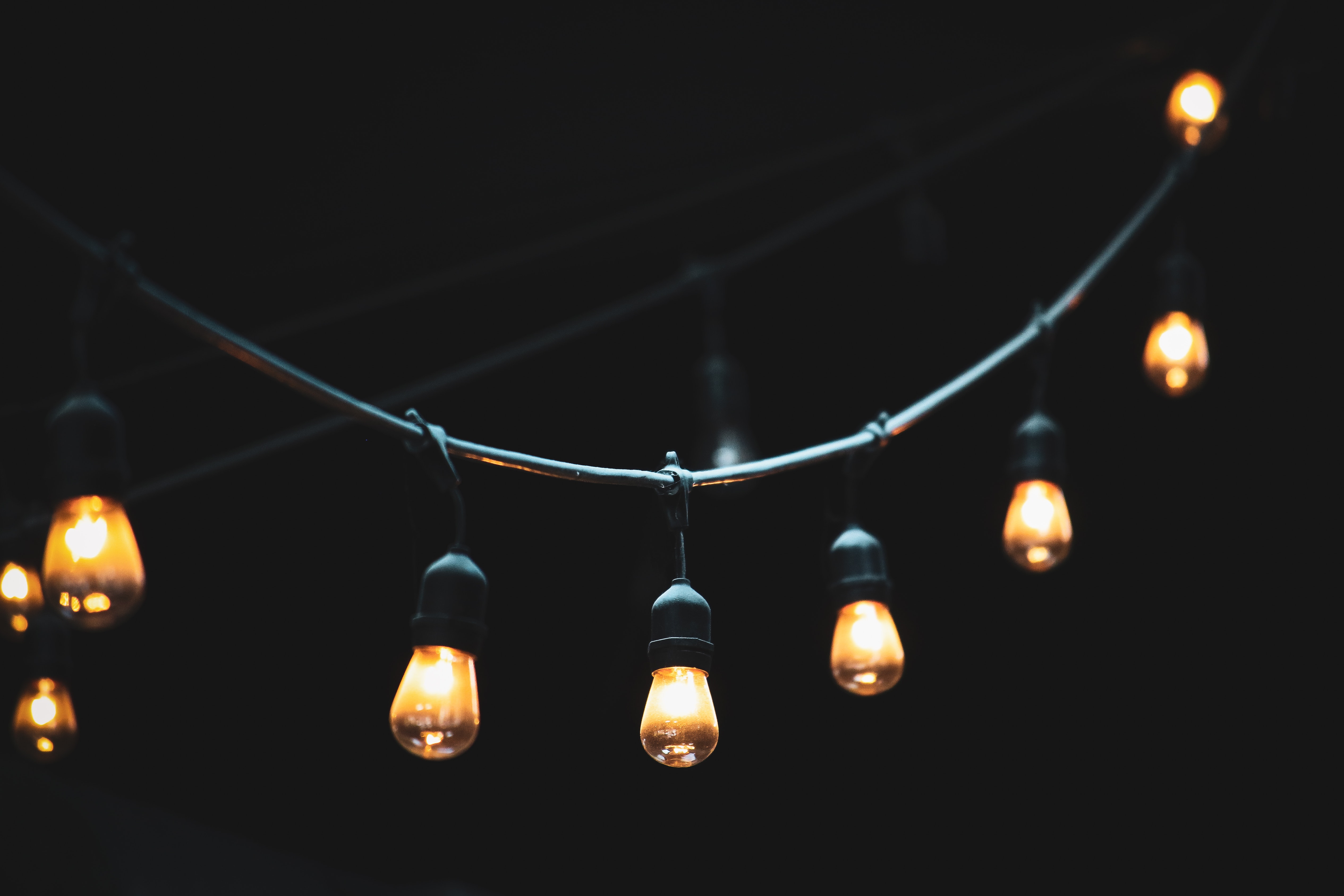By Rémy Dolan
Your art and craft show customers probably don’t pay much attention to your booth lighting, but good lighting does help make your product look its best — and aids in making sales. It doesn’t matter if you are just starting out or are looking to improve what you already have in place; creative lighting techniques and systems are always a worthwhile investment. Think of your booth as your own individual store. How inviting is a dark, shadowy store?
Battery powered or standard electricity
Deciding whether to implement a lighting system that depends on battery power or a show venue’s electrical source is a personal choice and may boil down to cost. Either way, an artist still needs to purchase and use fixtures, and in some scenarios, an artist can use either-or. While purchasing a deep-cycle marine battery, charger, and inverter isn’t cheap, neither are per-show electricity charges. Purchasing a battery-operated system will often pay for itself within a few shows in lieu of paying for per-event electricity fees. Plus, you will always be prepared for events that do not offer electricity to artists.
Industry giant Pro Panels recommends: “The higher the amp hour rating, the longer the lights will run. Our advice is to buy the largest battery that you can afford or carry.” A decent deep-cycle marine battery will cost around $100, on average. Keep in mind that these batteries should not be drained beyond 50 percent of their capacity because the life of the battery will become compromised.
Pro Panels experts found an affordable charger on Amazon and recommends purchasing one with a digital readout, so you can see when the battery is full charged, and the amount of voltage put into the battery. The Schumacher SSC-1500A-CA Ship ‘N’ Shore 15 Amp SpeedCharge Charger with Battery Clamps runs just shy of $50. Add cable connectors and cable connector extension cord for another $13.
Pro Panels used a 200-watt inverter and found that “bigger is not always better.” Choose an inverter that has two outlets, to be able to plug in extension cords. I found the prices to be quite inexpensive on Amazon. The Power Bright PW200-12 Power Inverter 200-Watt 12 Volt DC to 110 Volt AC inverter costs just $23 with free Prime shipping. If you think you need more wattage, you can go up from there.
Lightweight options exist
If the thought of hauling a heavy deep-cycle marine battery, which can weigh 45-75 pounds sounds daunting, you’re not alone. There are other options out there, such as the EF EcoFlow 500-watt River Portable Power Station. The lightweight silent generator uses an included lithium ion battery; however, this 11-pound powerhouse does come with a hefty $600 price tag.
If you want to go the ultimate eco-friendly route, for $900 you can invest in the EcoFlow River Portable Power Station Bundle which comes with a 500-watt solar generator, 50-watt solar charger panel, and a padded case. This set-up weighs in at 23 pounds altogether.
The Aeiusny 500-watt Portable Power Station Solar Generator and a Renogy 100-Watt 12 Volt Monocrystalline Solar Panel costs about $430.
Bulb Basics
Deciding on how many lights you need, what type and wattage, and placement will depend greatly on the art or crafts you are showing. Expert Bruce Baker says that 1,000 watts of light will effectively light up a 10-by-10-foot booth, but many artists and craftspeople successfully employ 500 watts in their booths and are well-lit. Somewhere in between 500-1,000 watts (incandescent equivalent) is ideal.
Do you only need overhead general lighting, spot lighting, or underlighting? If you sell silver and white-gold jewelry, you may prefer a whiter light source, and if you sell wood or natural-colored goods, you mighty opt for a warmer-hued light source. No matter what your style or need, it’s important to select fixtures and bulbs that are bright, efficient, and those that do not throw off a lot of heat.
While the cost of LED (light-emitting diode) bulbs has gone down, some artists may still prefer to use CFL (compact fluorescent) bulbs. Some artists prefer to buy their fixtures and bulbs from big-box stores in the event they need to pick up a replacement while on the road. Other artists prefer to stick to custom-designed lighting plans.
If you are on a budget and not ready to jump into a professional lighting system, you can start out with simple fixtures that run on AA batteries. Of course, you will only get a small amount of light, but perhaps this added glow, or a few small, focused spotlights is all you need in lower-light conditions.







